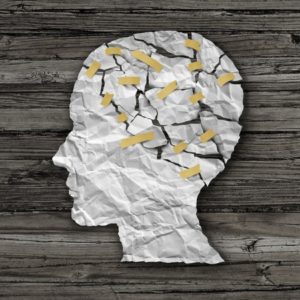Psychiatry Needs a Revolution

Peter Gøtzsche wrote a January 2018 editorial in the British Medical Journal, where he elaborated on why he thinks, “Psychiatry is a disaster area in healthcare that we need to focus on.” In his editorial, Gøtzsche said the prevailing paradigm in psychiatry was to say psychiatric drugs have specific effects against specific disorders; and that their actions do more good than harm. However, he asserted that as a consequence of its liberal use of psychiatric drugs, psychiatry actually does more harm than good. Gøtzsche and other so-called “antipsychiatry,” critics are often dismissed by psychiatry. But there was a study that surveyed the attitudes of medical teaching faculty towards psychiatry and psychiatrists; and the results had more in common with the antipsychiatrists than you might think.
Stuart, Sartorius and Linamaa published “Images of Psychiatry and Psychiatrists” in the open access journal, Acta Psychiatra Scandinavica. They surveyed 1,057 teaching medical faculty members from 15 academic teaching centers in the United Kingdom, Europe and Asia. The overwhelming majority of respondents held negative views towards psychiatry as a discipline, psychiatrists and psychiatric patients. Some of their findings were startling: 90% thought psychiatrists were not good role models for medical students; 84% thought psychiatric patients should be treated only within specialized facilities.
When the survey asked about the perception of psychiatry as a profession, 8.9% thought psychiatry was unscientific; 7.7% thought it was not evidenced-based; and 8.0% thought psychiatry was not a genuine, valid branch of medicine. Perceptions of psychiatric treatment thought psychiatrists had too much power over their patients (25.0%); treatments were not as effective as in other branches of medicine (22.6%); and most who receive treatments do not find them helpful (20.4%). Then 28.6% said they would not encourage a bright student to enter psychiatry; and 75.4% said many students at their medical school were not interested in pursuing psychiatry as a career.
Results highlight the extent to which non-psychiatrist medical faculty hold negative opinions of psychiatry as a discipline, psychiatric treatments, psychiatrists as role models for medical students, psychiatry as a career choice, psychiatric patients, and psychiatric training. The most outstanding findings were that psychiatrists were not considered to be good role models for medical students, and psychiatric patients were considered to be emotionally draining and unsuitable to be treated outside of specialized facilities or in general hospitals.
“In Search of an Evidence-Based Role for Psychiatry,” by Read, Runciman and Dillon noted this was not the only study indicating negative views of psychiatry by other medical professionals. They cited a study by Curtis-Barton and Eagles that found medical students were discouraged from choosing psychiatry as a career either a lot or a little because of a perceived lack of evidence base (51%); and the scientific basis of psychiatry (53%). Only 4-7% of UK medical students saw it as a ‘probable/definite’ career because of its poor evidence base. Commenting further on “Images of Psychiatry and Psychiatrists,” Read, Runciman and Dillon said:
Even more revealing than the survey findings was psychiatry’s response to it. The researchers themselves, including a former President of the World Psychiatric Association, wondered whether their colleagues’ opinions are ‘well founded in facts’ or ‘may reflect stigmatizing views toward psychiatry and psychiatrists’. Their own answer to that question becomes abundantly clear when, instead of proposing efforts to address the problems identified by the medical community, such as having little scientific basis, they recommend only ‘enhancing the perception of psychiatrists’ so as to ‘improve the perception of psychiatry as a career.’
The responses to the survey, all written by psychiatrists, dismissed each concern “and blamed everyone but their own profession, including their supposedly ignorant, prejudiced medical colleagues and the biased media.” Read, Runciman and Dillon then described problems with how mental health issues are conceptualized, what causes them and how to treat them. “Despite all this, biological psychiatry is trying to expand the reach of what others consider to be an unscientific, reductionistic, simplistic and pessimistic ‘medical model’.” A truly evidence-based psychiatry would recommend psychiatric medications at a last resort (and for a short time period). The adverse effects of medications should be fully disclosed and “no medical treatment should be forced on anyone against their will.”
Read, Runciman and Dillon said there were three core research areas that psychiatry should be demonstrating progress in, if it is a legitimate scientific, medical discipline. They are: conceptualization, causation and treatment of the disorders.
With regard to the conceptualization of psychiatric disorders, “psychiatry’s primary contribution is an ever expanding list of labels.” Many do not reach even minimal scientific reliability levels and calling them ‘diagnoses’ is often a misnomer. Significantly, the NIMH announced when the DSM-5 was about to be published that it was abandoning the DSM diagnostic approach to classifying mental health problems for its research to develop scientifically robust ‘research domains.’ See “Patients Deserve Better Than the DSM” for more information on this.
“In terms of causation, psychiatry has focused predominantly on chemical imbalances, brain abnormalities and genetics.” But has repeatedly failed findings of any substance in support of that premise. Genetics has an important role, if the research is done on constructs that actually exist. There is also “the role of epigenetic processes whereby genes are activated and deactivated by the environment.”
Research suggests that the safety and efficacy of psychiatric drugs has been grossly exaggerated. Documentation in support of this claim is overwhelming. See the websites for Mad in America, Peter Breggin, and David Healy and RxISK for starters. You can also search this website or start with: “In the Dark About Antidepressants,” “Blind Spots With Antipsychotics.”
Peter Gøtzsche similarly noted concerns with the “liberal use of psychiatric drugs.” He identified four concerns with the prevailing paradigm in psychiatry and gave supporting evidence for each.
- First, the effects of the drugs are not specific. “They impair higher brain functions and cause similar effects in patients, healthy people and animals.” For instance, not only does serotonin (SSRI antidepressants influence serotonin levels) seem to have a role in maintaining mood balance, it can effect social behavior, appetite and digestion, sleep memory and sexual desire and function.
- Second, research in support of the paradigm that psychiatric drug have specific effects against specific disorder is flawed.
- Third, the widespread use of psychiatric drugs has been harmful for patients. In every country where the relationship has been examined, an increased use of psychiatric medications has accompanied an increase in the number of chronically ill people and the number of people on disability pensions.
- Fourthly, all attempts to use brain scans to show that psychiatric disorders cause brain damage have failed. “This research area is intensely flawed and very often, the researchers have not even considered the possibility that any brain changes they observe could have been caused by the psychiatric drugs their patients have taken for years” Yet this has been shown repeatedly in many reliable studies, especially for neuroleptic drugs.
Peter Gøtzsche said the prevailing paradigm in psychiatry, that its drugs have specific effects against specific disorders, is unsustainable when the research in support of it is critically appraised. He said psychiatry needed a revolution; reforms were not enough. “We need to focus on psychotherapy and to hardly use any psychiatric drugs at all.” Dr. Gøtzsche is a medical researcher and the Director of the Nordic Cochrane Center. Along with 80 others, he helped start the Cochrane Collaboration in 1993, which is “a global independent network of researchers, professionals, patients, carers, and people interested in health.” The work of the Cochrane Collaboration is recognized as an international gold standard for high quality, trusted information.









